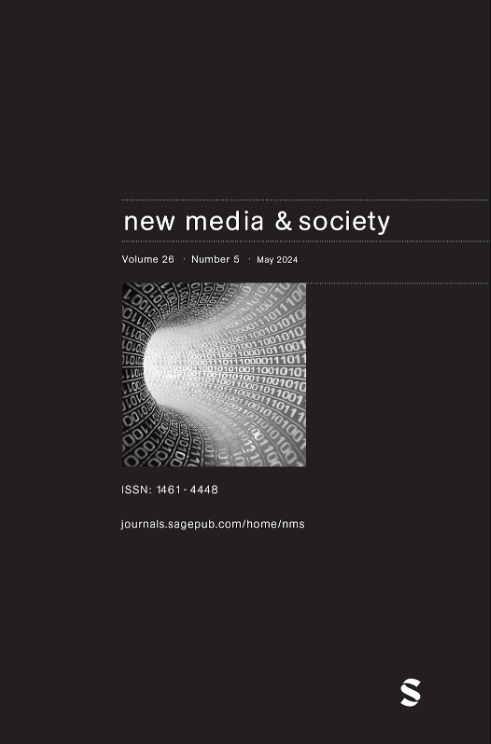Exploring social media users’ experiences with algorithmic transparency cues
IF 4.3
1区 文学
Q1 COMMUNICATION
引用次数: 0
Abstract
All mainstream social media platforms now use algorithms to display recommended content, and some (e.g. Instagram, LinkedIn) have started showing what we call利用算法透明度线索探索社交媒体用户的体验
所有主流社交媒体平台现在都使用算法来显示推荐内容,一些(例如Instagram, LinkedIn)已经开始显示我们所谓的算法透明度线索,说明为什么某些帖子被推荐。然而,对于用户在自己的信息流中看到的线索以及他们如何体验这些线索,我们知之甚少。因此,通过对美国成年社交媒体用户的在线调查(N = 515),我们收集了关于两个研究问题的数据:(1)用户在自己的feed中发现了哪些类型的算法线索,以及(2)他们对算法的体验及其透明度。对用户提交的截图和线索描述的内容分析表明,大多数透明度线索指的是用户的行为、网络中其他人的行为和赞助帖子。此外,开放式回答表明用户对算法持批评态度,呼吁在社交媒体上提高算法的透明度,并为研究人员和平台设计师提供建议。
本文章由计算机程序翻译,如有差异,请以英文原文为准。
求助全文
约1分钟内获得全文
求助全文
来源期刊

New Media & Society
COMMUNICATION-
CiteScore
12.70
自引率
8.00%
发文量
274
期刊介绍:
New Media & Society engages in critical discussions of the key issues arising from the scale and speed of new media development, drawing on a wide range of disciplinary perspectives and on both theoretical and empirical research. The journal includes contributions on: -the individual and the social, the cultural and the political dimensions of new media -the global and local dimensions of the relationship between media and social change -contemporary as well as historical developments -the implications and impacts of, as well as the determinants and obstacles to, media change the relationship between theory, policy and practice.
 求助内容:
求助内容: 应助结果提醒方式:
应助结果提醒方式:


